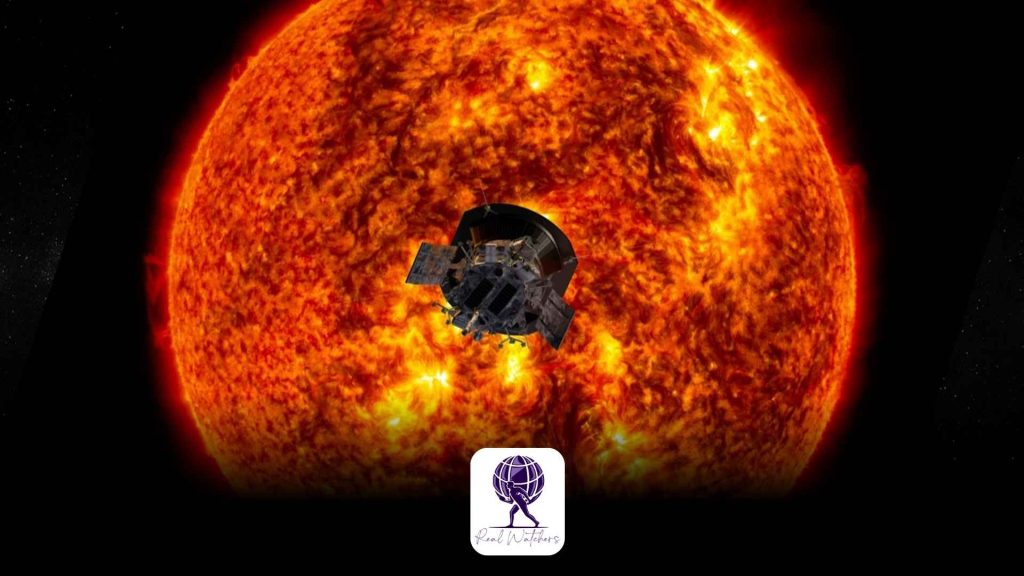A NASA spacecraft is on a mission to achieve a historic milestone by making the closest-ever approach to the Sun.
The Parker Solar Probe is daringly descending into the Sun’s outer atmosphere, where it will encounter intense temperatures and severe radiation levels.
During its intense fly-by, the spacecraft will be out of communication for several days. Scientists eagerly anticipate a signal at 05:00 GMT on 28 December to determine whether it has successfully endured the conditions.
The probe may enhance our understanding of the Sun’s mechanisms.
Dr Nicola Fox, the head of science at NASA, stated in an interview with BBC News, “For centuries, people have studied the Sun, but you don’t experience the atmosphere of a place until you visit it.”Consequently, a proper understanding of our star’s atmosphere remains elusive unless we venture through it ourselves.
The Parker Solar Probe, launched in 2018, is on a mission to the centre of our solar system.
The object has made 21 passes by the Sun, each time drawing closer, but the upcoming Christmas Eve encounter is set to break records.
The probe reaches its closest point at 3.8 million miles (6.2 million km) from our star’s surface.
NASA’s Nicola Fox offers a striking perspective on the Parker Solar Probe’s proximity to the Sun. She explains, “We are 93 million miles away from the Sun, so if I put the Sun and the Earth one metre apart, Parker Solar Probe is four centimetres from the Sun—so that’s close.”
The probe must withstand temperatures reaching 1,400C and radiation levels threatening to disrupt its onboard electronics.
The spacecraft is safeguarded by a robust 11.5 cm (4.5 inches) thick carbon-composite shield, yet its strategy emphasizes rapid entry and exit.
Remarkably, it is set to travel at an unprecedented speed of 430,000 miles per hour, which translates to the astonishing ability to fly from London to New York in under 30 seconds.
Parker’s velocity results from the significant gravitational force exerted on it as it descends toward the Sun.
What drives the pursuit of such an ambitious endeavour to “touch” the Sun?
Researchers are optimistic that the spacecraft’s journey through our star’s outer atmosphere, known as the corona, will answer a longstanding enigma.
“The corona is exceptionally hot, and the reasons behind this phenomenon remain unclear,” states Dr Jenifer Millard, an astronomer at Fifth Star Labs in Wales.
The Sun’s surface temperature hovers around 6,000 degrees Celsius, yet its corona, the delicate outer atmosphere visible during solar eclipses, soars to millions of degrees despite being situated farther from the Sun. The question arises: what factors contribute to the increasing temperatures in our atmosphere?
The mission aims to enhance scientists’ understanding of solar wind, the continuous flow of charged particles from the corona.
The interaction of these particles with the Earth’s magnetic field results in the spectacular display of auroras lighting up the sky.
However, this phenomenon, known as space weather, can also lead to significant issues, disrupting power grids, electronics, and communication systems.
Dr. Millard emphasizes the significance of comprehending the Sun, its activity, space weather, and the solar wind, highlighting their crucial impact on our daily lives on Earth.
Nasa scientists are experiencing a tense period this Christmas as the spacecraft remains out of communication with Earth.
Nicola Fox has stated that once a signal is transmitted back to Earth, the team will send her a text featuring a green heart to confirm the probe’s satisfactory status.
She acknowledges her apprehension regarding the bold endeavour but expresses confidence in the probe.
I will focus on the spacecraft’s concerns. We have meticulously engineered it to endure even the most severe conditions. “This spacecraft is remarkably resilient.”








